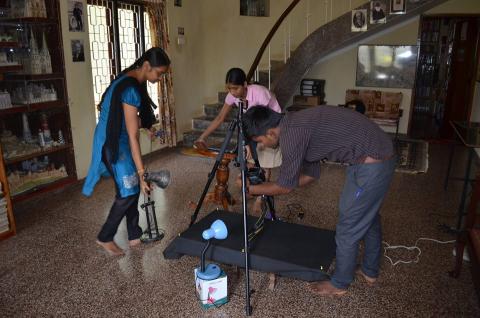
Aims and objectives
Throughout millennia, religion has played a major role in South Asian history. The nineteenth century, the cusp of the pre-industrial and modern South Asia, was a major turning point in South Asian history. A burgeoning of religious fervour and revivalism marks this period. The coming of Christian missionaries in droves, and their complex interrelation with the colonial administration, further complicated the religious milieu, which had already witnessed tensions between the Muslims and Hindus. Within this environment, the place of the Punjab was rather peculiar. Nineteenth century Punjab was marked with a series of religious revivalist movements in Hinduism, Islam and Sikhism, and this was the only northern province where Christian missionaries also made a huge imprint. Therefore, an understanding of the interplay between these religious communities, their revivalist and proselytising movements, and their impact on society and politics is essential to developing a more in-depth and nuanced assessment of the general historical narrative of South Asia and of the Punjab in particular.
There is already a dearth of primary source material on pre-industrial India, and especially the Punjab. Archives are scattered, often inaccessible, and usually in very poor condition. Within this context, primary source materials on Christians and Christian missionaries, beyond the official mission archives, are even fewer. In this, the importance of Nur-i-Afshan, a periodical published by the Presbyterian Mission in the Punjab, in Urdu, from 1877 to 1966, is one of the very few primary sources which hails from local Indian sources. In addition to being a religious publication, Nur-i-Afshan is also significant since it forms part of a large and growing corpus of Urdu periodical publishing in the nineteenth century. In nineteenth century northern India, Urdu was the dominant language of discourse, and due to cheap printing, almost anyone who had an opinion or idea printed something in Urdu. Therefore, such Urdu publications give the researcher an invaluable insight into the thinking, concerns, and ideas of nineteenth century Indians (especially non-official Indians), and enable a better understanding of the social, political and religious forces at play at this critical turning point. Furthermore, the study of such periodicals is of interest to scholars engaged in linguistics and language development, since the nineteenth century was the key age in the development of the Urdu language, and the styles of prose, grammar, and diction used in this publication are important research materials. The role of a missionary society in taking up a local vernacular for discourse at that time makes the importance of Nur-i-Afshan even greater and its study more significant.
Sometimes published weekly, and other times bi-monthly, Nur-i-Afshan, was a multifaceted news magazine and carried local and international news summaries, government postings, commodity prices, and advertisements, but also opinion articles, essays, proverbs, and poems. The gazette’s acceptance of unsolicited articles and editorial commitment to present contrasting perspectives fostered an early form of ‘information commons’ that was different in style and format to the Urdu and English newspapers that developed during this same period. The variety of contributors also adds to its archival importance as it is not only the domain of professional journalists and academics, but a collection of writings from the broad public. In Nur-i-Afshan’s hand-written Urdu typeset one encounters a multitude of voices discussing an array of social, political, and religious topics that demonstrate continuity with the past and, in later editions, the encounter with the modern. The editorial structure also presents an interesting anomaly. The editorial staff, as noted by their names, included representatives from the majority Muslim community as well as from minority sects, such as the Ahmadiya and Indian Christians.
Unfortunately, the extant editions of Nur-i-Afshan are in a precarious state. Printed on highly acidic paper, because it was cheap, this brittle paper is fast deteriorating and is already past its usual survival date. Having combed regional and national libraries, it is clear that Forman Christian College’s Ewing Library holds the only available copies of the periodical. These survived only due to the care of a Librarian and would otherwise have been discarded along with many other historical publications which are quickly disappearing due to the lack of care, vision, and infrastructure for their preservation and dissemination. About twenty years of material have already been lost (from 1944 to 1966) and many of the remaining pages have been damaged by moisture or insects. Approximately 21,361 pages will be scanned and made freely accessible online.
Outcomes
Blog: 'Voices from pre-partition India' - The Nur-i-Afshan Periodical from the Punjab. June 2015
The records copied by this project have been catalogued as:
- EAP660/1 نورافشان Nur-i-Afshan [1873-1944]
Due to the cyber-attack on the British Library in October 2023, the archives and manuscripts database is currently inaccessible and we are unable to provide links to the catalogue records for this project.



